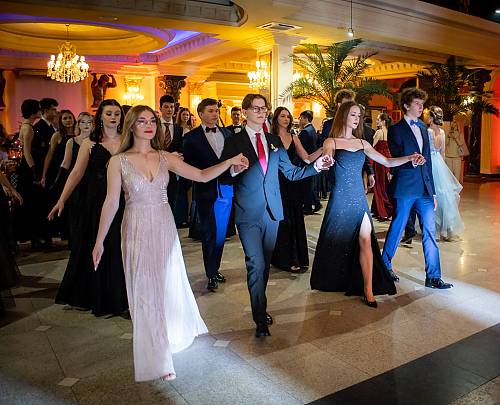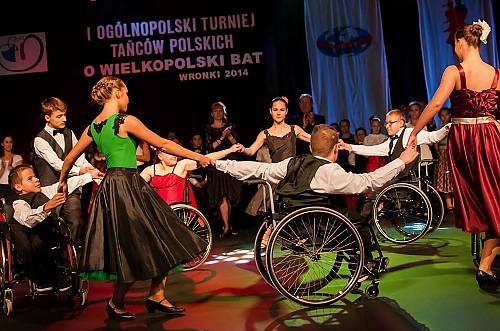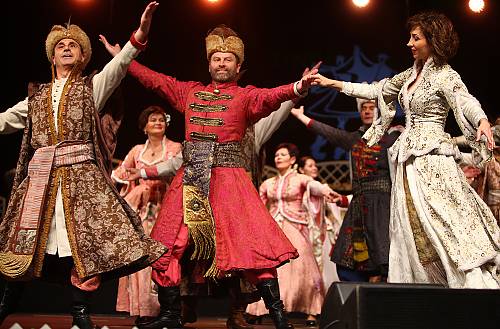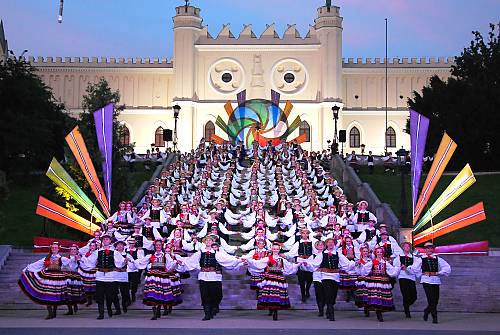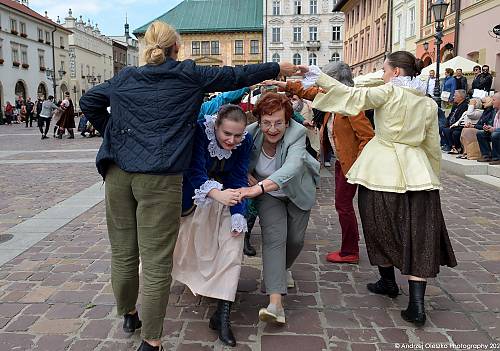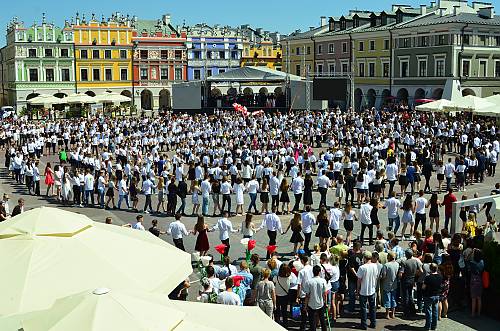Polonaise, traditional Polish dance
Inscribed in 2023 (18.COM) on the Representative List of the Intangible Cultural Heritage of Humanity

The polonaise is a joyful Polish group dance, which can be enacted by a few to even several hundreds of pairs marching in procession, following a trajectory proposed by the first pair. The basic step involves bending one leg while taking a step forward with the other. During the dance, the pairs perform various figures, such as raising joined hands to create bridges under which other participants can pass. As the tempo of the polonaise is moderate, participants with no prior experience can observe others and join in on the dance. Today, the tradition of dancing the polonaise is inextricably linked with prom – a ball for high school students. In some communities, the polonaise is also danced at weddings, new year’s or carnival balls and other celebrations. The practice is typically transmitted within families and in educational institutions, dance groups and local communities. As it is widely present in Polish culture, general awareness of the dance and its social meanings are increased by literature, music and film. A form of joint celebration, the polonaise commemorates important moments in family and community life and symbolizes cooperation, reconciliation and equality. Because it is often danced by people of all ages and backgrounds, it also promotes unity, solidarity and dialogue.




